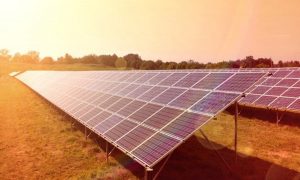A mechanism for reducing the risks associated with financing of solar power projects and make them viable under the aegis of the International Solar Alliance(ISA) is set to be rolled out in a year, the Ministry of New and Renewable Energy (MNRE) said on Tuesday.

With 19 countries having already ratified its framework agreement, the ISA is set to become a treaty-based global inter-governmental organization on Wednesday. ISA has been developing a Common Risk Mitigating Mechanism (CRMM) for de-risking and reducing financial cost of solar projects in the ISA member countries.
The Paris Declaration establishing ISA states the countries share the collective ambition to undertake innovative and concerted efforts for reducing cost of finance and technology for immediate deployment of solar generation assets. “This will help pave the way for future solar generation, storage and technologies for each prospective member country’ individual needs, by effectively mobilizing over $ 1,000 billion in investments that will be required by 2030,” MNRE said in a statement.
Another major initiative under ISA is Digital Infopedia which allow stake holders from ISA countries to collaborate with each other. The interactive platform was operationalized in May 2017 and has three heads — member countries counter for investment opportunities; at least 1,000 best practices on solar energy; and member countries of ISA and the ISA Secretariat audio and visual interaction.
The 19 countries which have ratified the ISA agreement include India, France, Australia, Bangladesh, Comoros, Cuba, Fiji, Guinea, Ghana, Malawi, Mali, Mauritius, Nauru, Niger, Peru, Seychelles, Somalia, South Sudan and Tuvalu. Also, there are 46 signatory countries for the alliance.
The ISA is an Indian initiative, jointly launched by Prime Minister Narendra Modi and the then President of France in November 2015 in Paris on the side-lines of COP-21, the UN Climate Conference. It aims at addressing obstacles to deployment of solar energy through better harmonization and aggregation of demand from solar rich countries lying fully or partially between the Tropic of Cancer and Tropic of Capricorn.
The ISA Interim Secretariat has been operational as a de-facto organization since January, 2016 and three programmes have been launched — Scaling Solar Applications for Agriculture Use, Affordable Finance at Scale, and Scaling Solar Mini-grids. These programmes are expected to help in achieving the overall goal of increasing solar energy deployment in the ISA member countries for achieving universal energy access and speeding up economic development.




























